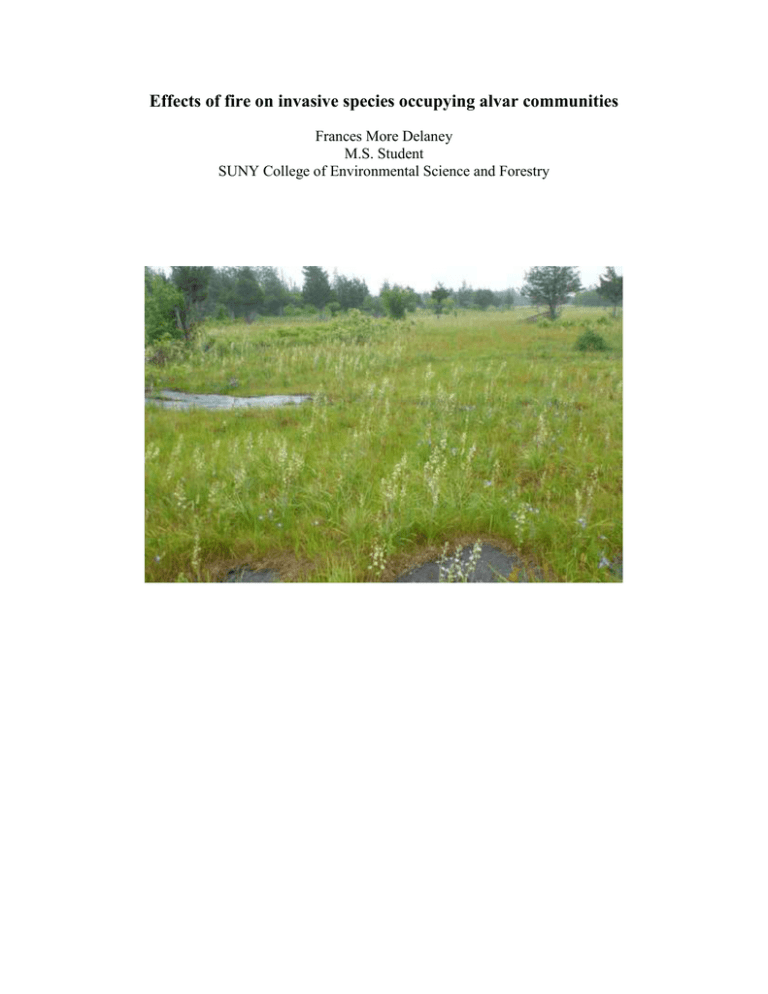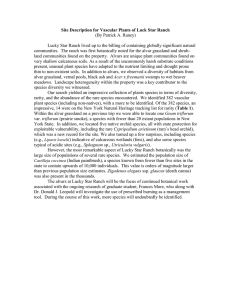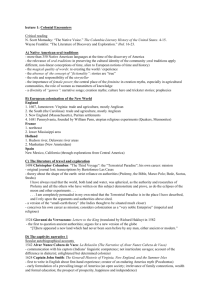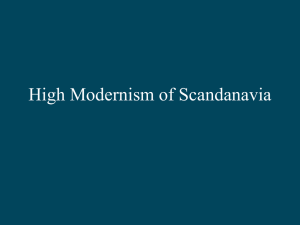Effects of fire on invasive species occupying alvar communities M.S. Student
advertisement

Effects of fire on invasive species occupying alvar communities Frances More Delaney M.S. Student SUNY College of Environmental Science and Forestry Introduction Alvar communities are unique areas characterized mainly by different layers of shallow soil resting on hard limestone bedrock with variable moisture levels and calcareous soils. Alvars are characteristically absent of large vegetation including trees and some shrubs and contain a large variety of plant associations. Several unique grasses and shrubs inhabit these areas and alvars contain a largely diverse community. These grassland and shrubland communities are only found in a few places around the world including the region northwest of Watertown, NY. Besides having a high biodiversity, they also have numerous rare and endangered plant and animal species. There has been little documentation regarding the processes that govern alvar communities. Invasion by woody plant species, overgrazing and development of nearby land irrevocably threaten their biodiversity and rare species. Of the remaining alvar areas in upstate New York, the largest expanse is at Lucky Star Ranch near Clayton, NY. Some of the rarest plant species of New York occur here. Managers of Lucky Star Ranch have attempted to control invasive species with herbicide applications and manual removal but because of the large area of the ranch and limited manpower as well as limited effectiveness of herbicides, woody invasive plants persist and are further encroaching on alvar grassland and shrubland. Summary of Proposed Research In the summer of 2011, I wished to measure methods for limiting the spread of invasive species over this significant area at Lucky Star Ranch. This included testing the effectiveness of treatments to prevent invasion; methods that may play a role in natural community formation. My objectives were to implement one of these methods, specifically a controlled burn, to gather a preliminary measurement on the response of vegetation in the burned plots before burning on a larger scale. Narrative of work completed To begin research, in late spring and early summer, ten small plots (1 m2) to be burned were designated in the degraded alvar area on the northern side of the property. I surveyed the vegetation in the area to determine locations for plots with more invasive or non-alvar elements adjacent to fairly intact alvar area. Though most of the plots were populated by several non-alvar species, there were some that had one or two individuals of a species that could be classified as alvar such as Campanula rotundifolia, Juniperus communis, Houstonia longifolia, Danthonia spicata and Senecio pauperculus. Finding areas that were devoid of any rare plants or alvar elements was almost impossible so plots were chosen based on the presence and abundance of invasive and exotic species. Figure 1: 1m square plots immediately after burning. Each plot was burned on June 28, 2011 (Figure 1). The property was fairly saturated with water in the weeks before this. Through mid-September there was not an extreme resprouting or growth of new plants and some are still unidentifiable until flowering occurs in the spring and summer of 2012. In a preliminary survey of plots, a variety of shrub species had resprouted, including Rhamnus cathartica, Cornus racemosa, and Rhus aromatica. There has also been growth of some exotic plants including Daucus carota, Potentilla species, Hypericum perforatum, and Melilotus officinalis as well as native but common species such as Toxicodendron radicans. These plots also had new growth (whether germinants or sprouts is still difficult to determine) of Campanula rotundifolia and vegetation that resembled Oligoneuron album, Zigadenus elegans, and other grass and sedge species that may be alvar species, though some of these will not be positively identifiable until flowering and more foliage appears. There is still, on average, 50% bare ground in each plot, so colonization will most likely continue into next growing season. Future Work To continue with work over the summer of 2012, I wish to implement four treatments on a larger scale: herbicide, control, burning and mechanical to be set up in a block arrangement. There would be ten 10m x 10m blocks, each block containing the four treatments. Percent cover by species would be measured before implementing treatments to obtain a baseline of the plant community of each block. Treatments would then be implemented in the late spring or early summer and percent cover by species would be measured again post-treatment. This would allow the comparison of the effectiveness of several methods for controlling invasive species at Lucky Star Ranch. Acknowledgements I am grateful to my major professor, Dr. Don Leopold, for his help on this project and my other committee members as well as the Edna Bailey Sussman Foundation; none of this research would have been possible without their generosity. These preliminary results have allowed me to narrow the focus of my thesis research and plan for carrying treatments out on a large scale in the coming field season (2012). This project will play a large role in my masters thesis research and help the managers of Lucky Star Ranch to determine the best management plan for control of invasive species on the property. The Sussman Foundation has been and will be credited wherever possible in future work and publications for making this project possible.






